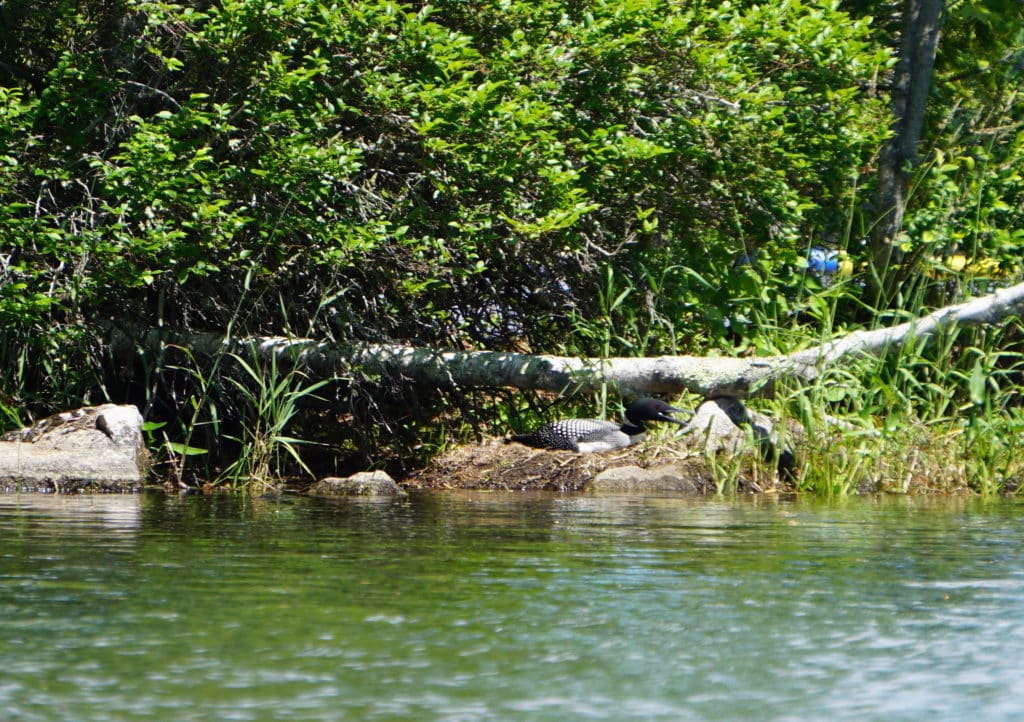
A loon glides across a still lake, the white dots on its black wings appearing to sparkle in the reflection off the water. But suddenly it gives out a quavering laugh. This “tremolo” usually means the loon feels alarmed or threatened. What has bothered this loon? It might be another loon intruding in its territory, a boat, a plane, a predator, or even you.
For nearly four decades, Maine Audubon has been studying threats to loons and engaging volunteers across Maine in conservation efforts. One of our most powerful and popular tools is the Annual Loon Count, scheduled this year for Saturday, July 17, from 7 to 7:30 am.
This event has engaged more than a thousand volunteers since 1983. On the third Saturday of July, participants head out in skiffs, kayaks, and pontoon boats to tally the Common Loons they see on more than 300 lakes across the state. Last year, even with the pandemic, 1,347 volunteers of all ages and 48 regional coordinators were able to safely carry on this beloved outdoor tradition.
Maine Audubon uses the statewide snapshot to estimate the annual population and track population trends across the decades. The information helps biologists, state officials, and Maine lake users understand more about the loons’ status and the health of Maine’s lakes.
Maine is fortunate to house the largest Common Loon population in the Northeast and the Annual Loon Count is a vital part of Maine’s efforts to safeguard this population. “The count gives us a window into the status and changes in Maine’s Common Loon population over time,” says Tracy Hart, Maine Audubon Wildlife Ecologist who leads the annual loon count.
Currently, Maine’s loon population is going strong. Since the loon count’s inception in 1983, the number of adult loons in the southern half of the state has essentially doubled, from an initial estimate of fewer than 1,500 to nearly 3,000 in 2020. This is thanks to conservation efforts like the Maine lead tackle ban and the Fish Lead Free Initiative which have helped reduce the number of adult loons that die from swallowing lead tackle.
However, other threats are increasing. “As motorboat operators, kayakers, and other lake users are getting back out on the water this year,” says Hart, “please remember that trauma from collisions with boats is a leading cause of loon deaths and the toll is rising. Boat wakes can also flood nests and disturbance can cause loons to abandon their nests. We encourage people to slow down, especially near islands and lakeshores, stay away from loon families, and learn to read the signs—like a tremolo—that loons use to tell you that you’re just too close. Also, as you plan for your 4th of July celebrations, please take extra care to look out for loon families trying to stay safe amongst the holiday boat traffic. “Just as it is for our pets, the noise and lights of fireworks can be alarming and even harmful for wildlife,” says Hart.
More information, including Maine Audubon’s “Living in Loon Territory” brochure, is available at maineaudubon.org/loons.
